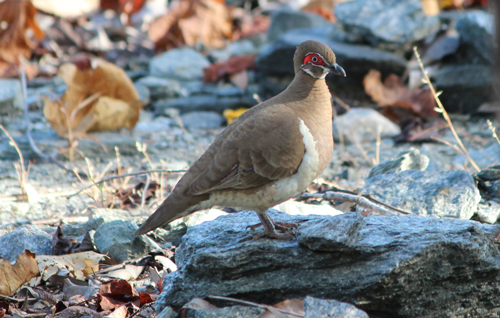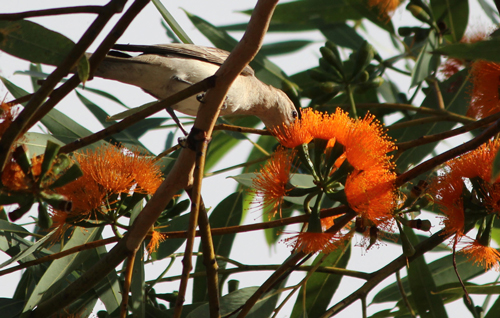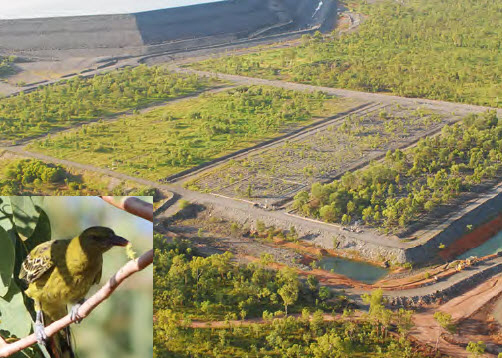Partridge family calls Ranger trial landform home

A small flock of the threatened Eastern Partridge Pigeon has made their home on the waste rock section of the trial landform at Ranger is a positive sign that the ecosystem is thriving.
The partridge pigeon family (2 adults and 1 baby) was first spotted two years ago on the trial landform and were recently captured on camera among a large colony of birds, insects and other wildlife which have been drawn to the site to feast on flowering and fruiting native plants.
According to the Commonwealth Department of Environment’s website, the Eastern Partridge Pigeon is listed as a vulnerable species and feeds on the ground on seeds from grasses, legumes, herbs and shrubs.

ERA Principal Advisor Rehabilitation and Ecology Dr. Ping Lu says in the Top End the population of the Partridge Pigeon has been found declining over the last decade. Colonisation of the landform by the Partridge Pigeon suggests that reconstructed landform can provide suitable habitat for this threaten species.
Partridge Pigeon is just one species from a colony of native birds foraging on the trial landform recently.
“The density of birds is very high during the flowering period. Birds are controlling the pests by eating the insects, which is a good, early sign of a functioning ecosystem.” Ping said.

More than 30 species of native plants are planted on the waste rock section of the landform which was established to identify the best method to revegetate the Ranger Project Area.
He said during a recent monitoring visit to the landform “it was a nice surprise to hear so many birds”.

As well as the partridge pigeons, Yellow orioles, Olive-backed Oriole, Varied Triller (juvenile), White winged Triller, Restless flycatcher and little Pied Cormorant were spotted feeding on insects/caterpillars as well as nectars of the bright flowers of native trees such as Eucalyptus phoenicea and Eucalyptus miniata (Darwin woollybutt).
In addition to the presence of birdlife and insects, snakes, lizards, wallabies, dingoes, frogs, ants and fungi are thriving amongst the trees on the site.
Ping says this demonstrates that it is possible to establish sustainable woodland on a waste rock landform.
